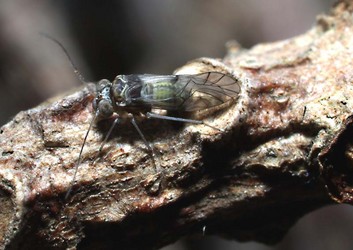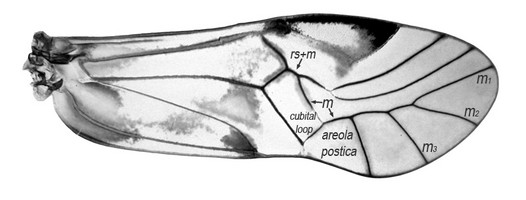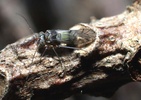Ptycta
Emilie Bess and Kevin P. Johnson- Ptycta aaroni
- Ptycta afasciata
- Ptycta anacantha
- Ptycta angulata
- Ptycta angustifrons
- Ptycta apicalis
- Ptycta apicantha
- Ptycta apicanthoides
- Ptycta arandae
- Ptycta aschekei
- Ptycta australis
- Ptycta badonneli
- Ptycta bebea
- Ptycta biloba
- Ptycta blanci
- Ptycta breuschi
- Ptycta bulbosa
- Ptycta buettikeri
- Ptycta caboverdensis
- Ptycta campbelli
- Ptycta chekei
- Ptycta chubsugulensis
- Ptycta cogani
- Ptycta johnsoni
- Ptycta cruciata
- Ptycta curvata
- Ptycta curviclava
- Ptycta deltoides
- Ptycta descarpentriesi
- Ptycta diacantha
- Ptycta diadela
- Ptycta diastema
- Ptycta dichotoma
- Ptycta dicrosa
- Ptycta disclera
- Ptycta distincta
- Ptycta distinguenda
- Ptycta drepana
- Ptycta elegantula
- Ptycta elena
- Ptycta emarginata
- Ptycta episcia
- Ptycta flavipalpi
- Ptycta floresensis
- Ptycta frayorgensis
- Ptycta frogneri
- Ptycta frontalis
- Ptycta furcata
- Ptycta giffardi
- Ptycta glossoptera
- Ptycta grucheti
- Ptycta gynegonia
- Ptycta gyroflexa
- Ptycta haleakalae
- Ptycta hardyi
- Ptycta hawaiiensis
- Ptycta heterogamias
- Ptycta hollowayae
- Ptycta iaoensis
- Ptycta improcera
- Ptycta incerta
- Ptycta incurvata
- Ptycta isabelae
- Ptycta kaala
- Ptycta kauaiensis
- Ptycta kenyensis
- Ptycta kiboschoensis
- Ptycta krakatau
- Ptycta laevidorsum
- Ptycta lanaiensis
- Ptycta lemniscata
- Ptycta leucothorax
- Ptycta lineata
- Ptycta lobata
- Ptycta lobophora
- Ptycta longicaulis
- Ptycta longipennis
- Ptycta longispinosa
- Ptycta lugosensis
- Ptycta lunulata
- Ptycta maculata
- Ptycta maculifrons
- Ptycta maculosa
- Ptycta marianensis
- Ptycta marta
- Ptycta merapiensis
- Ptycta microctena
- Ptycta microglena
- Ptycta micromaculata
- Ptycta molokaiensis
- Ptycta monticola
- Ptycta muogamarra
- Ptycta nadleri
- Ptycta nitens
- Ptycta novohibernica
- Ptycta oahuensis
- Ptycta obscura
- Ptycta oceanica
- Ptycta oligocantha
- Ptycta palikea
- Ptycta pallida
- Ptycta paralobata
- Ptycta pardena
- Ptycta parvidentata
- Ptycta parvula
- Ptycta pauliani
- Ptycta pearmani
- Ptycta pedina
- Ptycta peleae
- Ptycta perkinsi
- Ptycta persimilis
- Ptycta picta
- Ptycta pikeloi
- Ptycta pitallo
- Ptycta placophora
- Ptycta platyclava
- Ptycta polluta
- Ptycta polyacantha
- Ptycta precincta
- Ptycta prosta
- Ptycta pulchra
- Ptycta pupukea
- Ptycta quadrimaculata
- Ptycta reticulata
- Ptycta revoluta
- Ptycta rhina
- Ptycta sardjani
- Ptycta schillei
- Ptycta schisma
- Ptycta schneideri
- Ptycta serrata
- Ptycta seyrigi
- Ptycta simulator
- Ptycta stena
- Ptycta stenomedia
- Ptycta striatoptera
- Ptycta swezeyi
- Ptycta sylvestris
- Ptycta tachardiae
- Ptycta tapensis
- Ptycta telma
- Ptycta tikala
- Ptycta timorensis
- Ptycta trullifera
- Ptycta tsutsumii
- Ptycta umbrata
- Ptycta unica
- Ptycta vaga
- Ptycta verticalis
- Ptycta vittipennis
- Ptycta williamsorum
- Ptycta ypsilon
- Ptycta zimmermani
- Ptycta recava
Introduction
Ptycta Enderlein, 1925, is a large genus in the family Psocidae that includes more than 170 species from all zoogeographic regions of the world, with the greatest diversity in sub-tropical and tropical regions of Africa (29 species), Asia (43), and the Pacific Islands (63) (Leinhard & Smithers 2002, Yoshizawa 2006). Ptycta has undergone an explosive radiation on the Hawaiian Islands, where there are 51 described endemic species, 85% of which are single-island endemics.
Ptycta has been a problematic genus. The original description (Enderlein 1925) and subsequent revisions (Smithers 1983, 1985; Thornton 1984) have defined the group based on plesiomorphic wing venation characters. As a result, Ptycta has become a heterogeneous “holding genus” (Endang et al. 2002; Leinhard & Smithers 2002). Recently, new male genital characters have been described (Bess & Yoshizawa, unpublished data) that distinguish Ptycta from related genera. A full revision of the genus will be necessary to assign species lacking these synapomorphies to other genera.
Characteristics
Ptycta have typical Ptyctini morphology and are often black-and-white in color with spotted wings. Ptycta closely resemble sister genus Copostigma and can be distinguished by:
- forewing veins Rs,M fused for a short distance (see diagram)
- clunium of male terminalia with a strongly concave, membranous posteroventral corner
- paraproct of male terminalia with distinct swollen basal lobe
References
Badonnel A (1967) Insectes Psocoptères. Faune de Madagascar 23: 1-238.
Bess, E. C. and K. Yoshizawa. Redefinition of Ptycta Enderlein (Psocodea: ‘Psocoptera’: Psocidae) and a Taxonomic Revision of the Japanese Species. Submitted to Entomological Science.
Chui VWD, Thornton IWB (1972) A numerical taxonomic study of the endemic Ptycta species of the Hawaiian Islands (Psocoptera: Psocidae). Systematic Zoology 21: 7-22.
Endang SK, Thornton IWB, New TR (2002) The Psocidae (Insecta : Psocoptera) of Java and the eastern islands of Indonesia. Invertebrate Systematics 16: 107–176.
Enderlein G (1903) Die Copeognathen des indo-australischen Faunengebietes. Annales historico-naturales Musei nationalis Hungarici 1: 179-344.
Enderlein G (1906) Die australischen Copeognathen. Zoologische Jahrbücher (Abteilung Systematik) 23: 401-412.
Enderlein G (1925) Beiträge zur Kenntnis der Copeognathen IX. Konowia 4: 97-108.
Enderlein G (1931) The Percy Sladen Trust Expedition to the Indian Ocean in 1905, under the leadership of Mr J. Stanley Gardiner, M.A. VIII. Die Copeognathen-Fauna der Seychellen. Transactions of the Linnean Society of London, 2nd Series, Zoology 19: 207-240.
Günther KK (1974) Staubläuse, Psocoptera. In: Die Tierwelt Deutschlands. Jena. 61. Teil.
Lienhard C, Smithers CN (2002) Psocoptera (Insecta) World Catalogue and Bibliography. Muséum d'Histoire Naturelle, Geneva, Switzerland.
Mockford EL (1993) North American Psocoptera (Insecta). Sandhill Crane Press, Gainesville, Florida.
Mockford EL (2001) Additions and corrections to "A classification of the psocopteran family Caeciliusidae (Caeciliidae auct.)". Transactions of the American Entomological Society 127: 79-84.
Okamoto H (1907) Die Psociden Japans. Transactions of the Sapporo Natural History Society 2: 113-147.
Pearman JV (1934) New and little known African Psocoptera. Stylops 3: 121-132.
Perkins RCL (1899) Neuroptera. In: Fauna Hawaiiensis, pp. 77-87. Cambridge University Press, Cambridge.
Smithers CN (1972) The classification and phylogeny of the Psocoptera. Australian Museum Memoirs 14: 1-349.
Smithers CN (1983) A reappraisal of Clematostigma Enderlein with notes on related genera (Psocoptera: Psocidae). Australian Entomological Magazine 9: 71-79
Smithers CN (1985) Redefinition of Copostigma Enderlein (Psocoptera: Psocidae). Australian Entomological Magazine 12: 61-62.
Smithers CN, Thornton IWB (1990) Systematics and distribution of the Melanesian Psocidae (Psocoptera). Invertebrate Taxonomy 3: 431-468.
Thornton IWB (1981) Psocoptera of the Fiji Islands. Pacific Insects Monographs 37: 1-105.
Thornton IWB (1984) Psocoptera of the Hawaiian Islands. Part III. The endemic Ptycta complex (Psocidae): systematics, distribution and evolution. International Journal of Entomology 26: 1-128.
Thornton IWB, Lee SS, Chui VWD (1972) Insects of Micronesia: Psocoptera. Insects of Micronesia 8: 45-144.
Yoshizawa K (2002) Phylogeny and higher classification of suborder Psocomorpha (Insecta: Psocodea:'Psocoptera'). Zoological Journal of the Linnean Society 136: 371-400.
Yoshizawa K (2005) Morphology of Psocomorpha (Psocodea:’Psocoptera’). Insecta Matsumurana 62: 1-44.
Yoshizawa K, Smithers CN (in press) Systematic position of Trichodenotecnum enderleini (Roesler) (Psocodea: ‘Psocoptera’: Psocodae). Records of the Australian Museum.
Title Illustrations

| Scientific Name | Ptycta johnsoni |
|---|---|
| Location | Nokonoshima Island, Kyushu, Japan |
| Specimen Condition | Live Specimen |
| Sex | Male |
| Life Cycle Stage | adult |
| View | dorsal |
| Size | 4mm |
| Copyright | © 2006 Kazunori Yoshizawa |
About This Page
Emilie Bess

Illinois Natural History Survey, Champaign, Illinois, USA
Kevin P. Johnson

Illinois Natural History Survey, Champaign, Illinois, USA
Correspondence regarding this page should be directed to Emilie Bess at
bess@inhs.uiuc.edu
and Kevin P. Johnson at
kjohnson@inhs.uiuc.edu
Page copyright © 2009 Emilie Bess and Kevin P. Johnson
All Rights Reserved.
- First online 11 October 2006
- Content changed 25 March 2009
Citing this page:
Bess, Emilie and Kevin P. Johnson. 2009. Ptycta . Version 25 March 2009 (under construction). http://tolweb.org/Ptycta/35174/2009.03.25 in The Tree of Life Web Project, http://tolweb.org/









 Go to quick links
Go to quick search
Go to navigation for this section of the ToL site
Go to detailed links for the ToL site
Go to quick links
Go to quick search
Go to navigation for this section of the ToL site
Go to detailed links for the ToL site